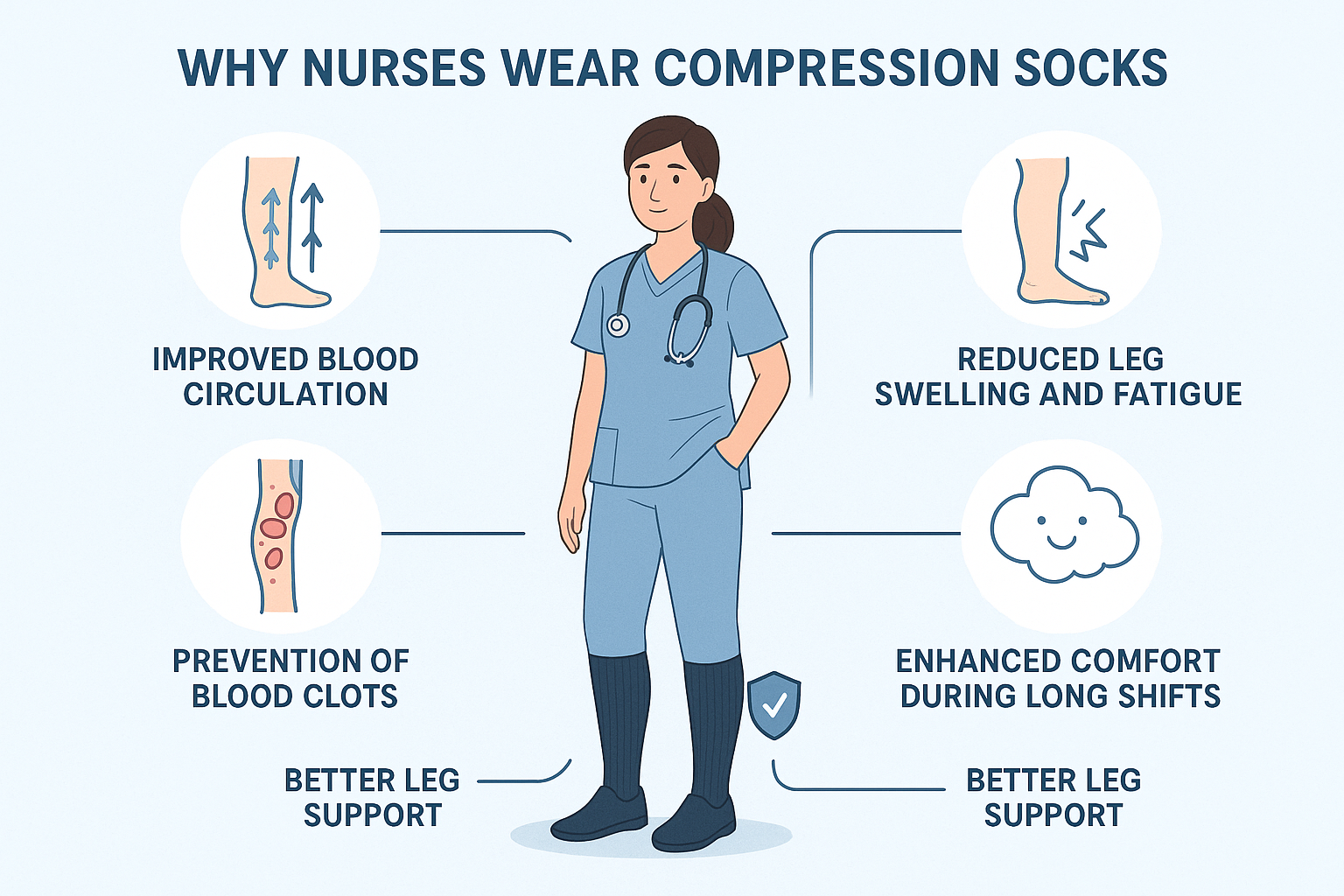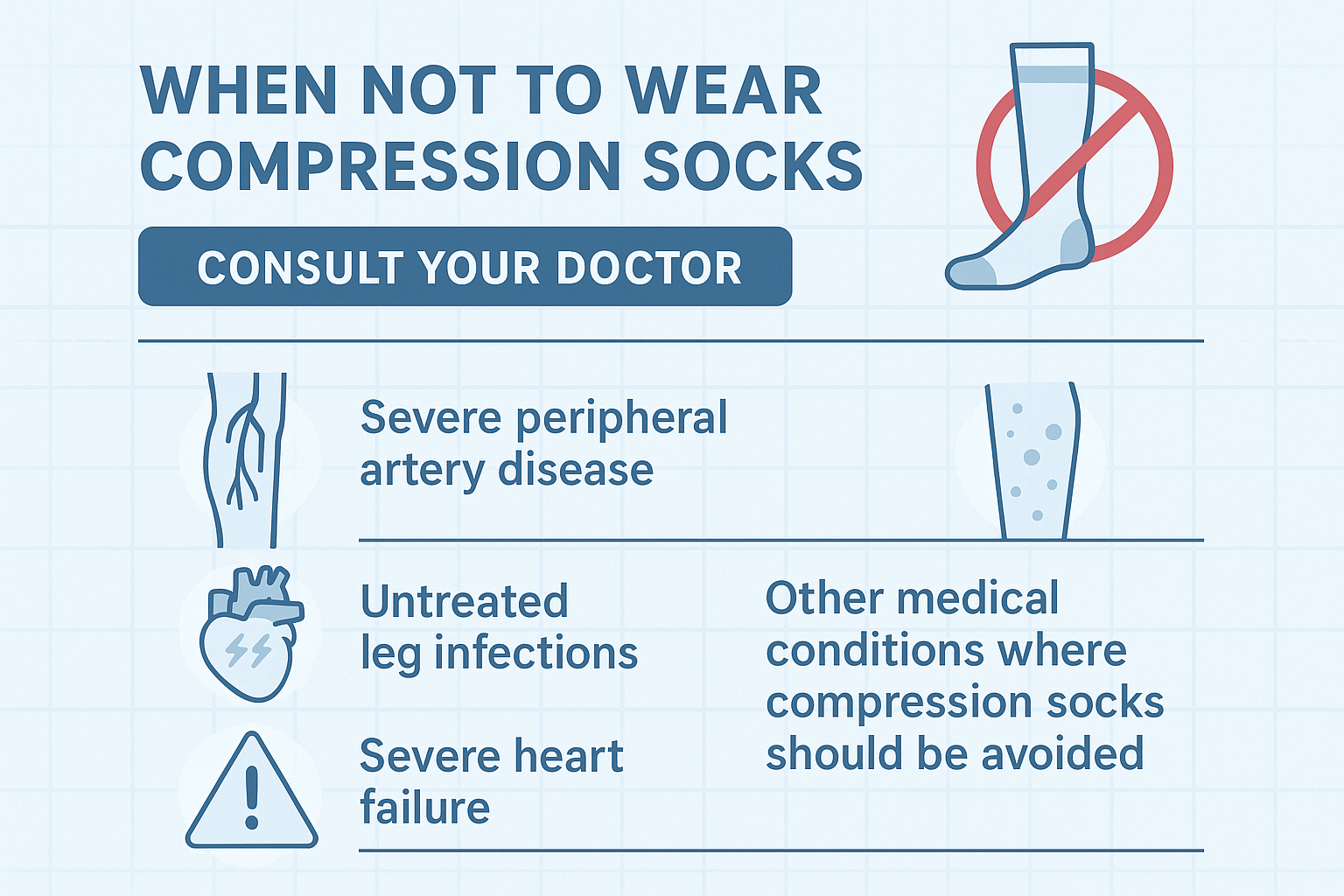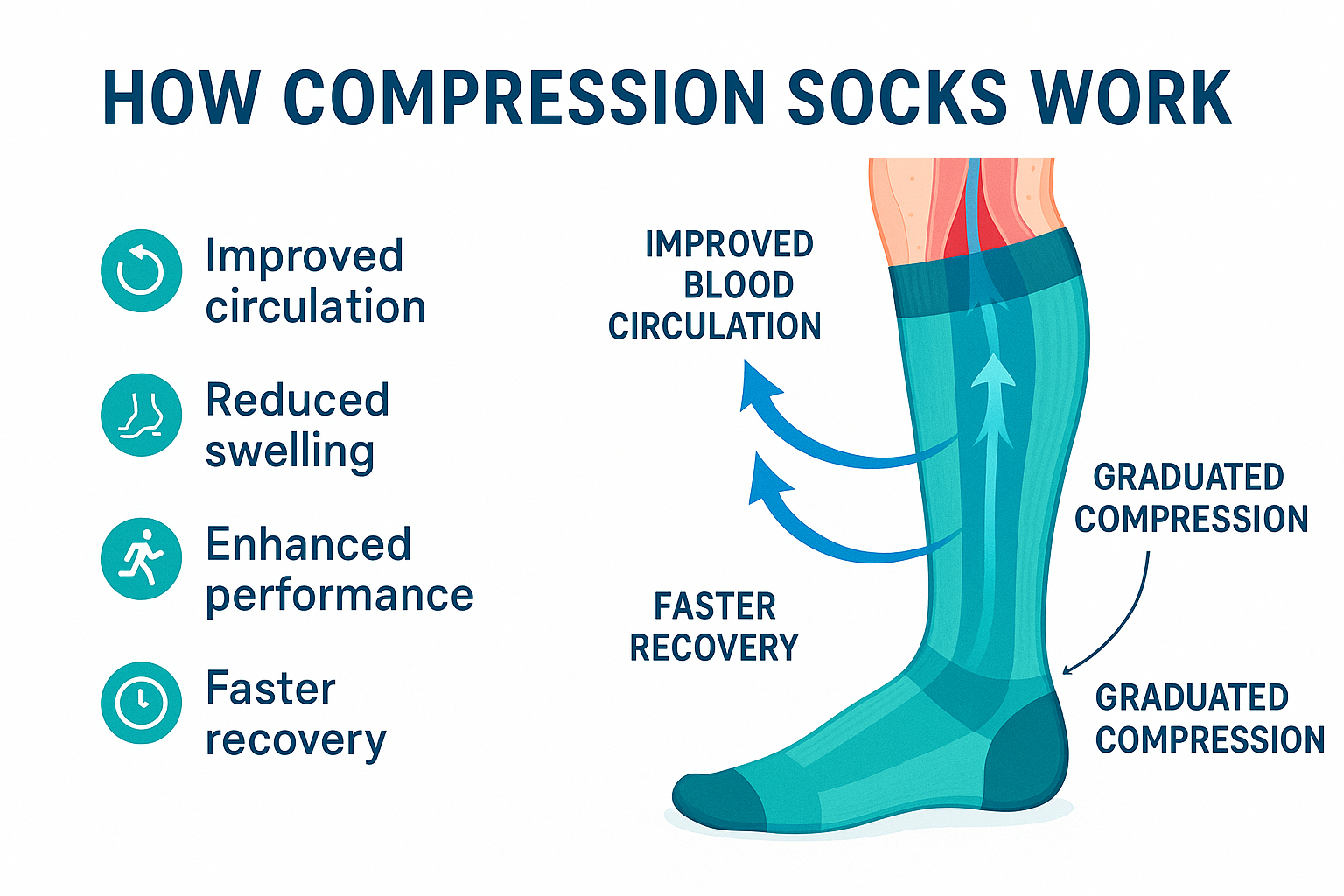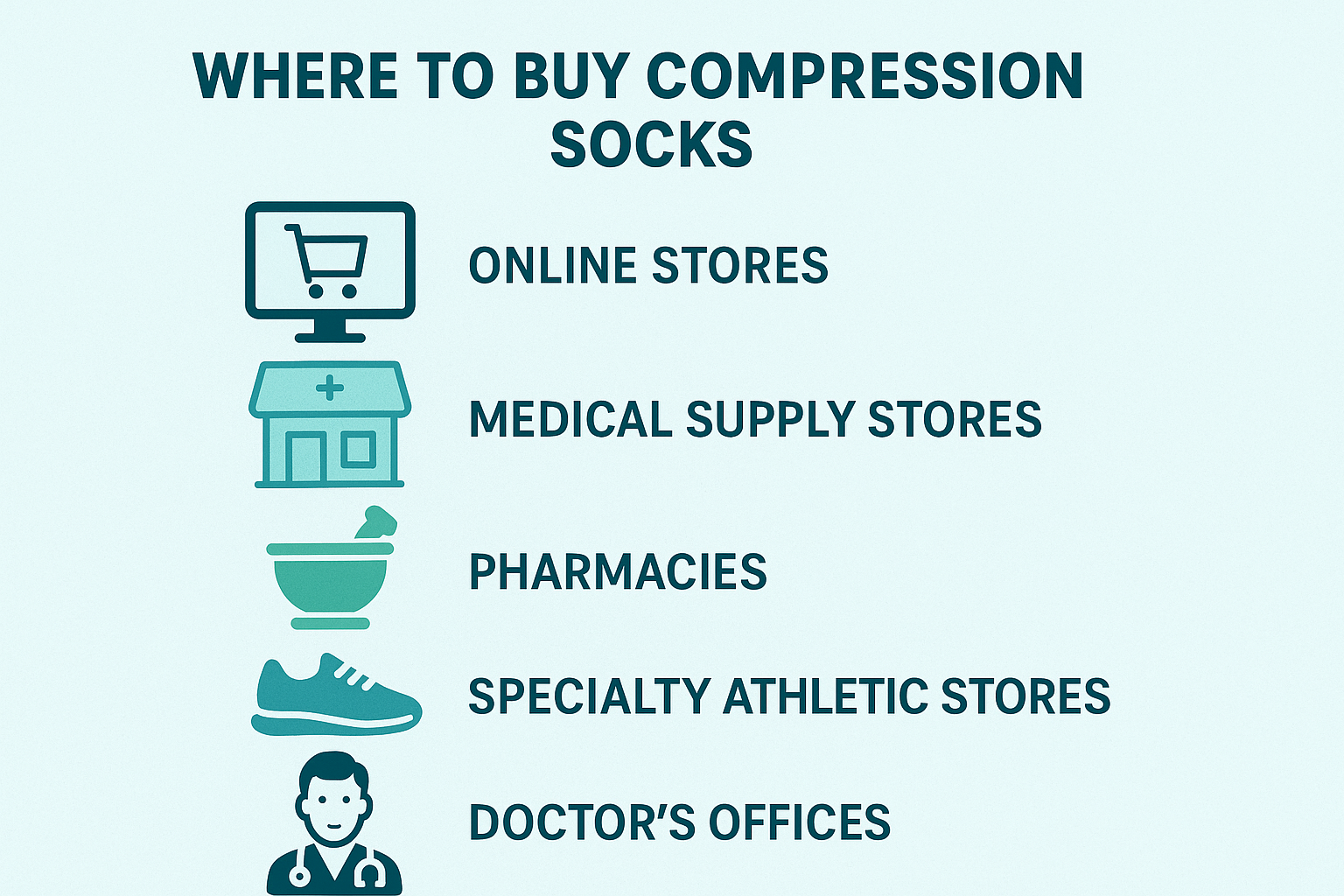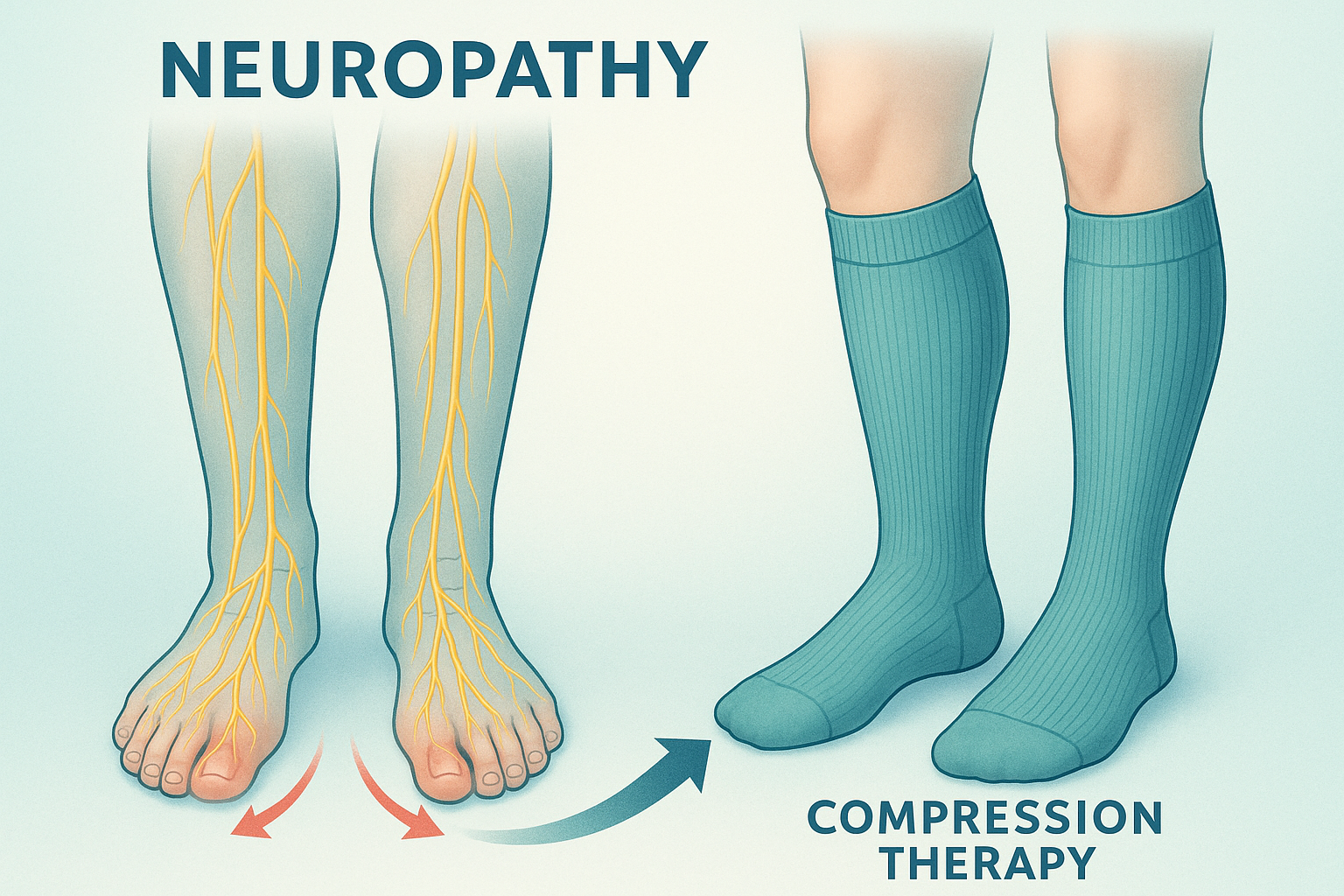How Do Compression Socks Work?
Compression socks are no longer just for athletes or medical patients—they’ve become an everyday wellness tool for anyone seeking better leg health. But how do compression socks work, and why are so many people recommending them? The secret lies in the science of graduated pressure. These specialized socks improve circulation, reduce swelling, and support muscle recovery in ways ordinary socks simply can’t.
In this complete guide, we’ll explain the science behind compression socks, the different levels available, who should wear them, and how to get the most benefit from daily use.
The Science Behind Compression Socks
Compression socks are designed with high-quality elastic fibers that apply gentle, controlled pressure to the legs. The key feature is graduated compression: the pressure is strongest at the ankle and gradually decreases as the sock extends up the calf or thigh. This design supports your body’s natural blood flow, helping it move upward against gravity.
Normally, when you sit or stand for long periods, blood can pool in the lower extremities, leading to swelling, fatigue, and discomfort. Compression socks counteract this by stimulating circulation, which keeps blood moving back toward the heart more efficiently.
What Happens Inside Your Body When You Wear Compression Socks?
Here’s a closer look at what compression socks are doing inside your body:
- Increased venous return: By squeezing the veins in the legs, compression socks help push blood upward, improving circulation.
- Reduced swelling: The pressure prevents fluids from collecting in the ankles and feet, reducing edema.
- Less muscle vibration: During physical activity, compression socks stabilize muscles, decreasing fatigue and soreness.
- Enhanced oxygen delivery: Improved circulation brings more oxygen-rich blood to leg tissues, aiding recovery and performance.
- Clot prevention: By keeping blood moving, compression socks reduce the risk of deep vein thrombosis (DVT), especially during travel.
This combination of benefits makes compression socks a powerful, drug-free way to support overall leg health.
Different Types of Compression
Not all compression socks are the same. They vary by compression level and length:
Compression Levels
- 8–15 mmHg: Mild compression for everyday wear and light fatigue.
- 15–20 mmHg: Moderate compression, perfect for travel, standing jobs, and pregnancy.
- 20–30 mmHg: Firm compression for athletes, varicose veins, or moderate medical conditions.
- 30–40 mmHg: Extra-firm compression prescribed for severe vein disorders.
Lengths
- Knee-high: The most common style, supporting calves and ankles.
- Thigh-high: Covers more surface area for broader circulation benefits.
- Full-length stockings/tights: Often prescribed for medical use.
Most people find that 15–20 mmHg knee-high socks provide the perfect balance of comfort and performance.
Who Can Benefit from Compression Socks?
Since compression socks work by improving circulation, nearly anyone can benefit. Common groups include:
- Athletes – to enhance performance and speed recovery after training.
- Travelers – to prevent swelling and clots on long flights or drives.
- Healthcare workers – such as nurses and doctors who stand for long shifts.
- Office workers – to counteract the effects of prolonged sitting.
- Pregnant women – for managing swelling and circulation issues.
- Older adults – to support vein health and reduce clotting risk.
Even healthy, active individuals notice greater comfort and energy when they incorporate compression socks into their daily routine.
Do Compression Socks Really Work?
The short answer: yes. Numerous studies have confirmed their effectiveness in improving circulation, reducing swelling, and alleviating fatigue. In fact, healthcare professionals often prescribe compression socks for patients recovering from surgery, those with varicose veins, or anyone at risk of clotting disorders.
Athletes also report less soreness and faster recovery, while frequent travelers swear by them for reducing ankle swelling. The consistent feedback across these groups proves that compression socks are more than just a trend—they’re a proven health tool.
How to Wear Compression Socks Properly
To get the maximum benefit from compression socks, follow these tips:
- Put them on first thing in the morning, before swelling begins.
- Make sure the socks lie flat against the skin without wrinkles.
- Wear them throughout the day during activity, work, or travel.
- Remove them at night unless directed by a doctor.
- Wash them regularly to maintain elasticity and hygiene.
Consistency is key—regular wear delivers the best long-term benefits.
How Long Should You Wear Compression Socks Each Day?
The answer depends on your needs. For everyday comfort, wearing compression socks during your waking hours is ideal. Athletes may wear them during training or for several hours post-exercise. For medical reasons, your doctor may recommend daily, all-day wear.
Everyday Scenarios Where Compression Socks Work Wonders
During Long Flights
Sitting for hours slows blood flow, which is why many travelers get swollen ankles after flying. Compression socks prevent this by keeping circulation steady.
At Work
Standing all day? Compression socks reduce fatigue and swelling. Sitting at a desk? They prevent blood pooling in your lower legs.
Sports & Fitness
From running to weightlifting, compression socks support muscles, reduce vibration, and promote faster recovery.
Pregnancy
Expecting mothers often experience swollen ankles. Compression socks offer a safe, natural way to relieve discomfort.
Common Myths About Compression Socks
“They’re only for medical patients.”
Wrong—millions of healthy people use compression socks daily for comfort and performance.
“They’re uncomfortable.”
Modern designs use breathable fabrics and stylish patterns, making them easy to wear all day.
“They don’t really do anything.”
Backed by science and medical recommendations, compression socks are a proven way to improve circulation and reduce leg fatigue.
Frequently Asked Questions
Can compression socks be worn every day?
Yes—most people wear them daily for work, travel, or exercise. They’re safe for long-term use.
Are they safe for everyone?
Generally yes, but people with certain conditions (like severe arterial disease) should consult a doctor before use.
Do they come in different styles?
Yes. You’ll find athletic, casual, and dress styles to fit every lifestyle. Browse our full collection here: Green Drop Compression Socks.
Conclusion: Why Compression Socks Work for Everyone
So, how do compression socks work? By applying graduated pressure, they keep blood moving, reduce swelling, support muscles, and protect against clotting. From athletes to travelers to everyday workers, millions of people experience the difference compression socks make in their comfort, health, and energy levels.
Want to try them yourself? Explore our collection today: Shop Compression Socks at Green Drop.



